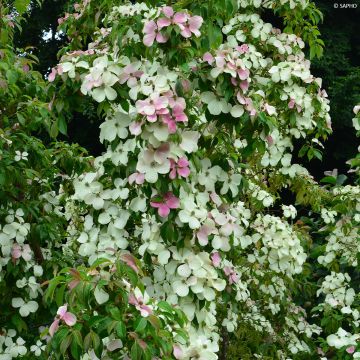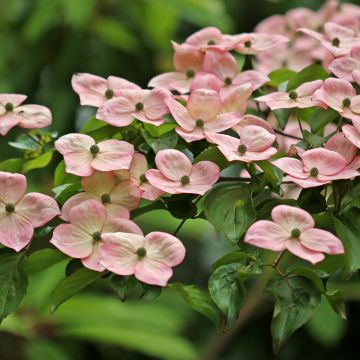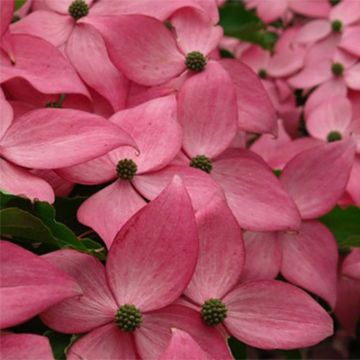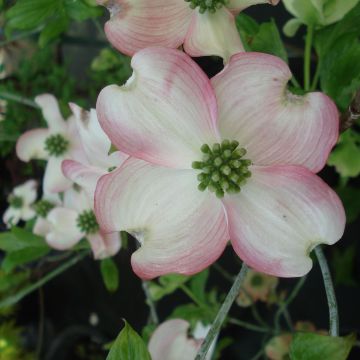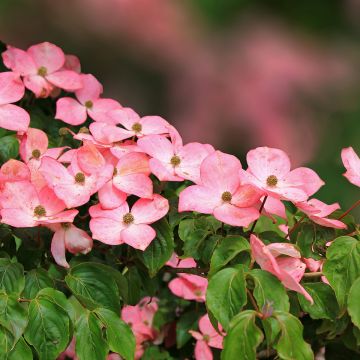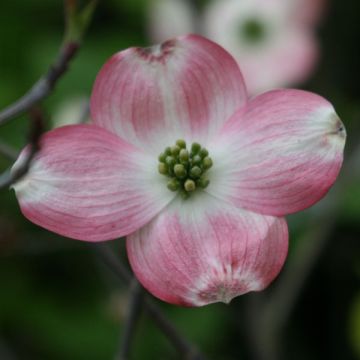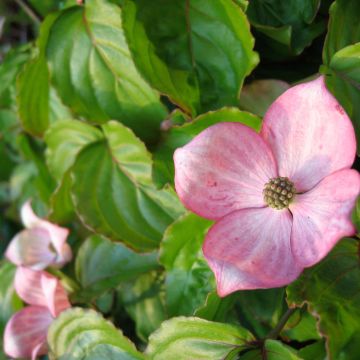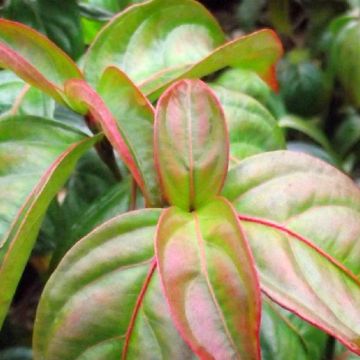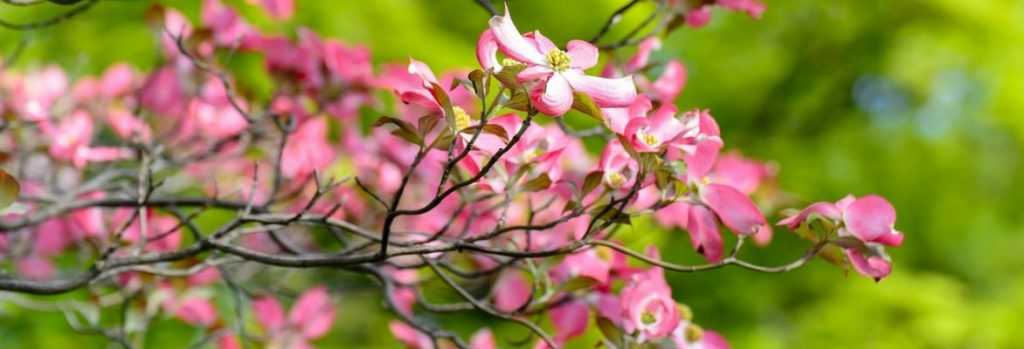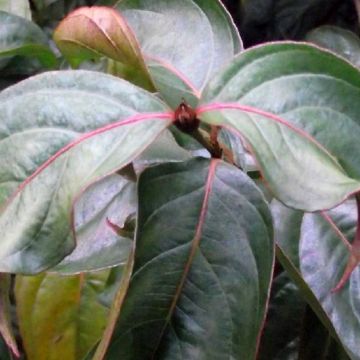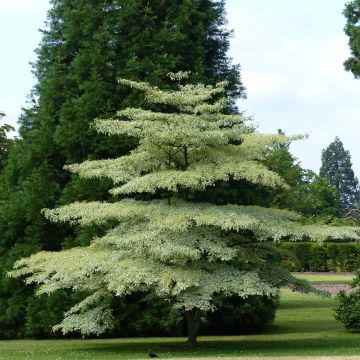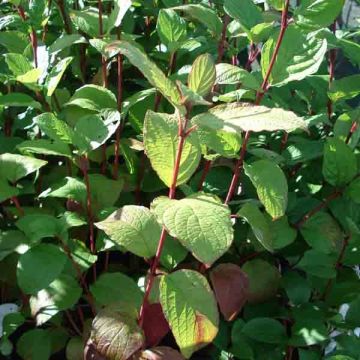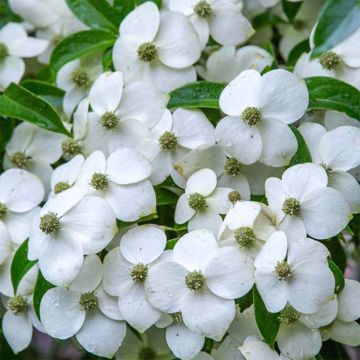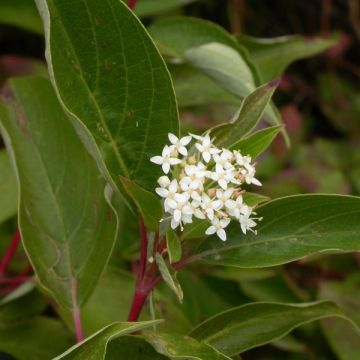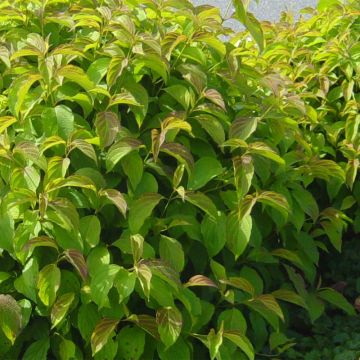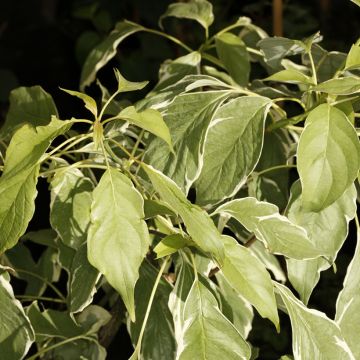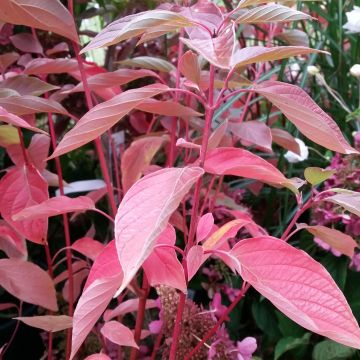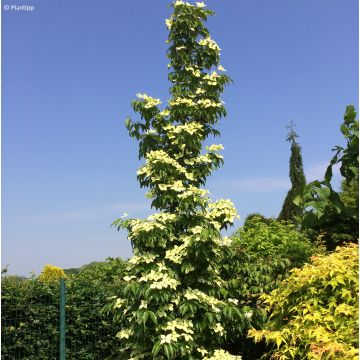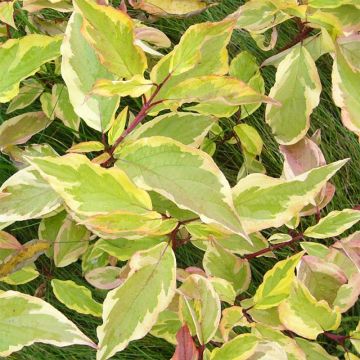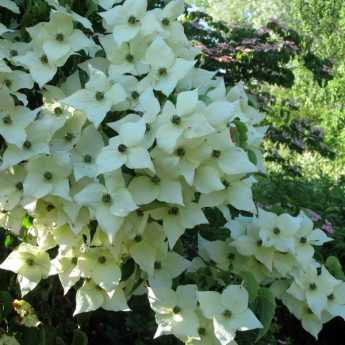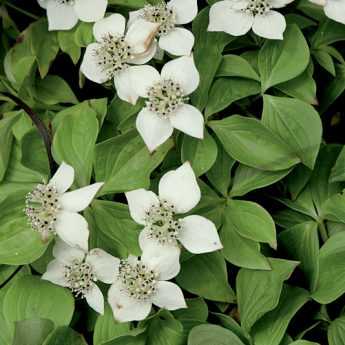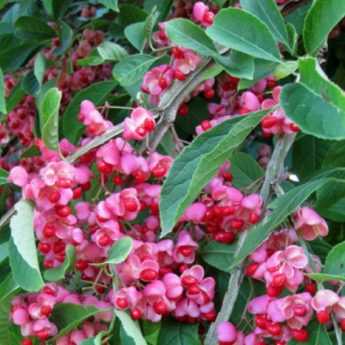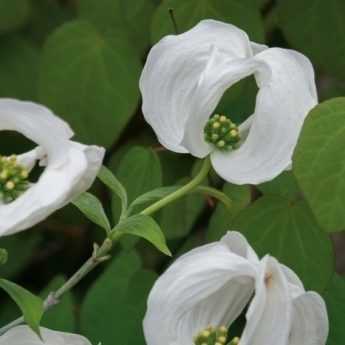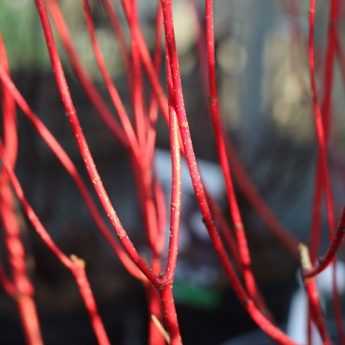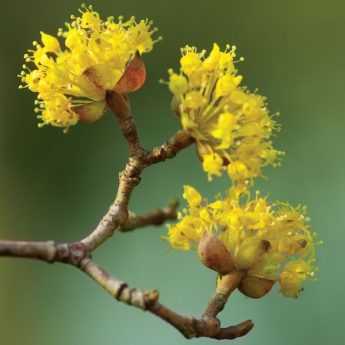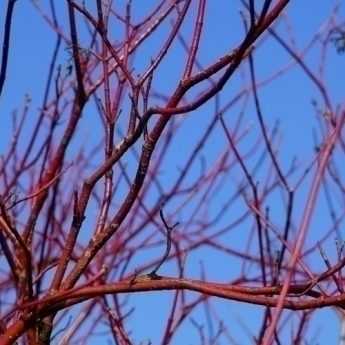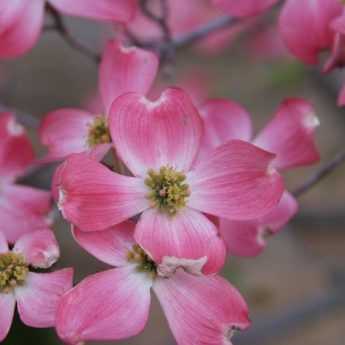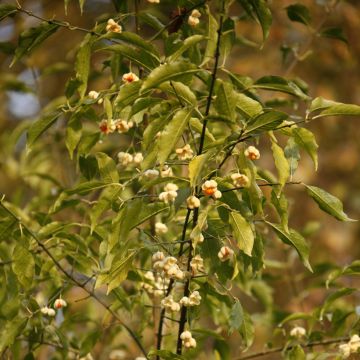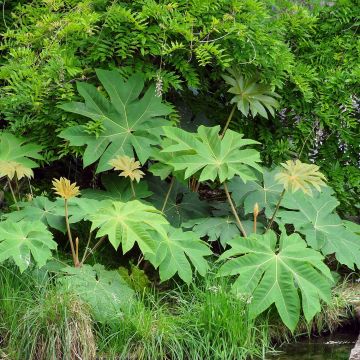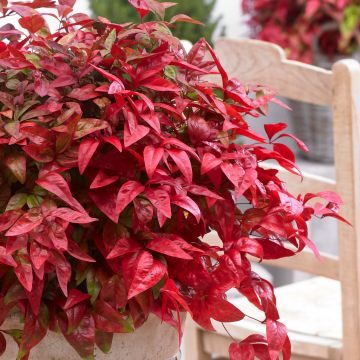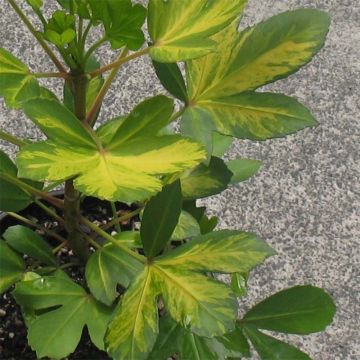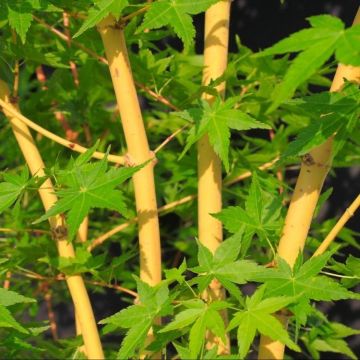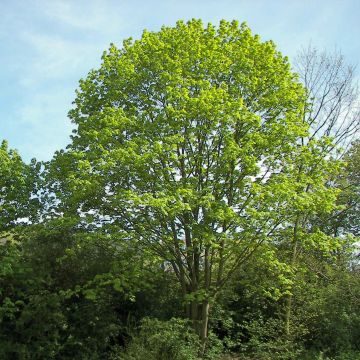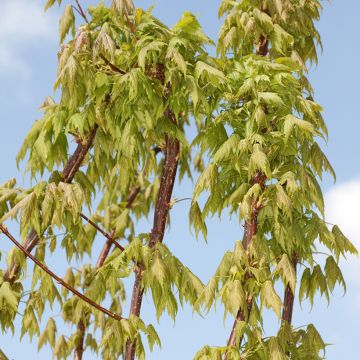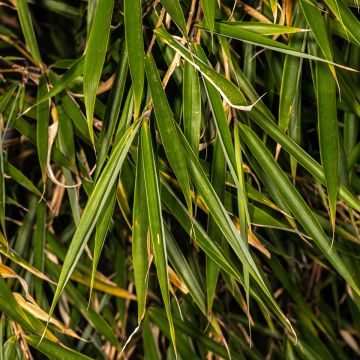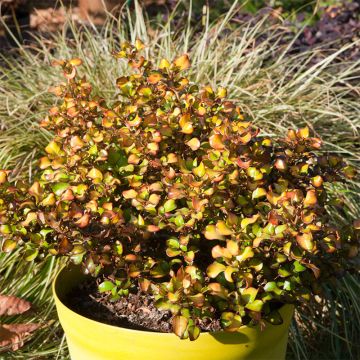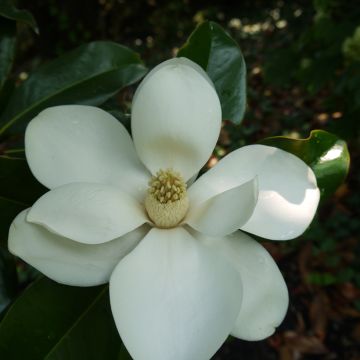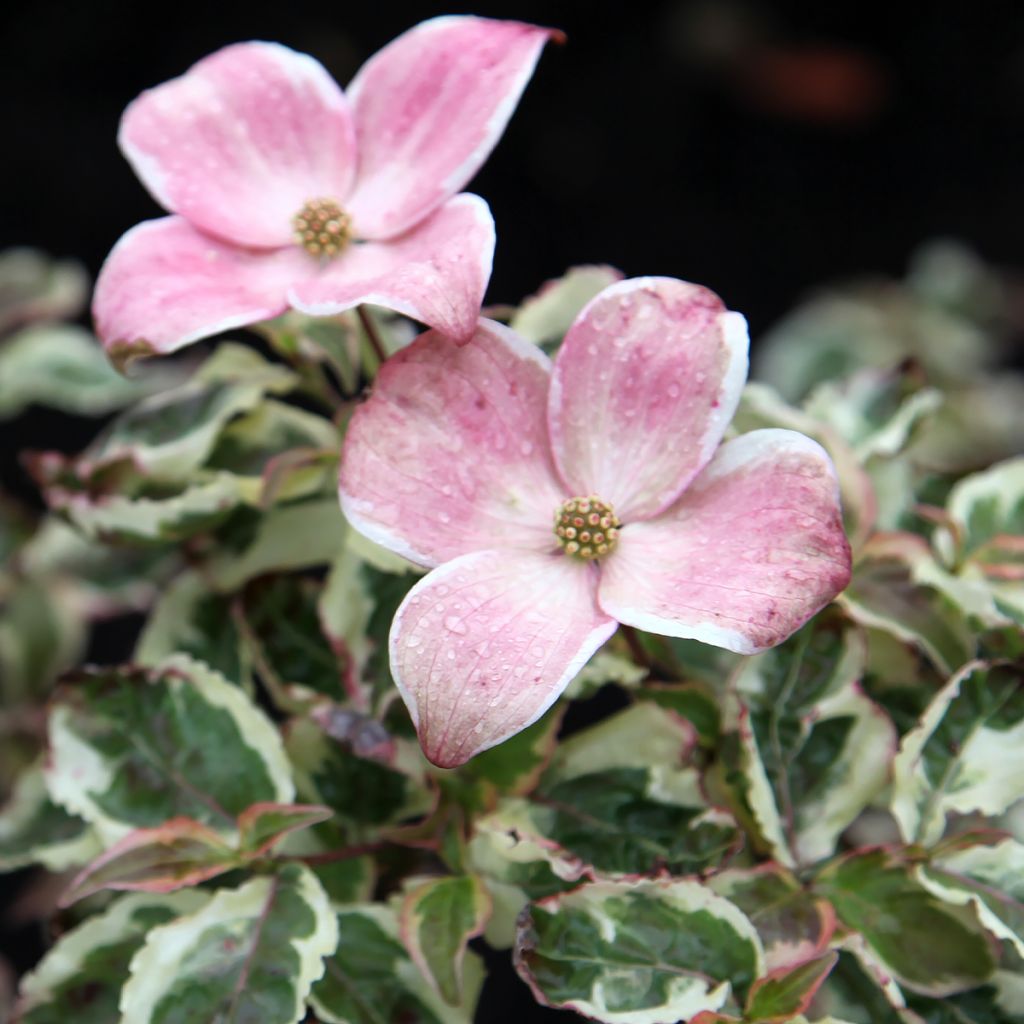

Cornus kousa Akatsuki - Cornouiller du Japon
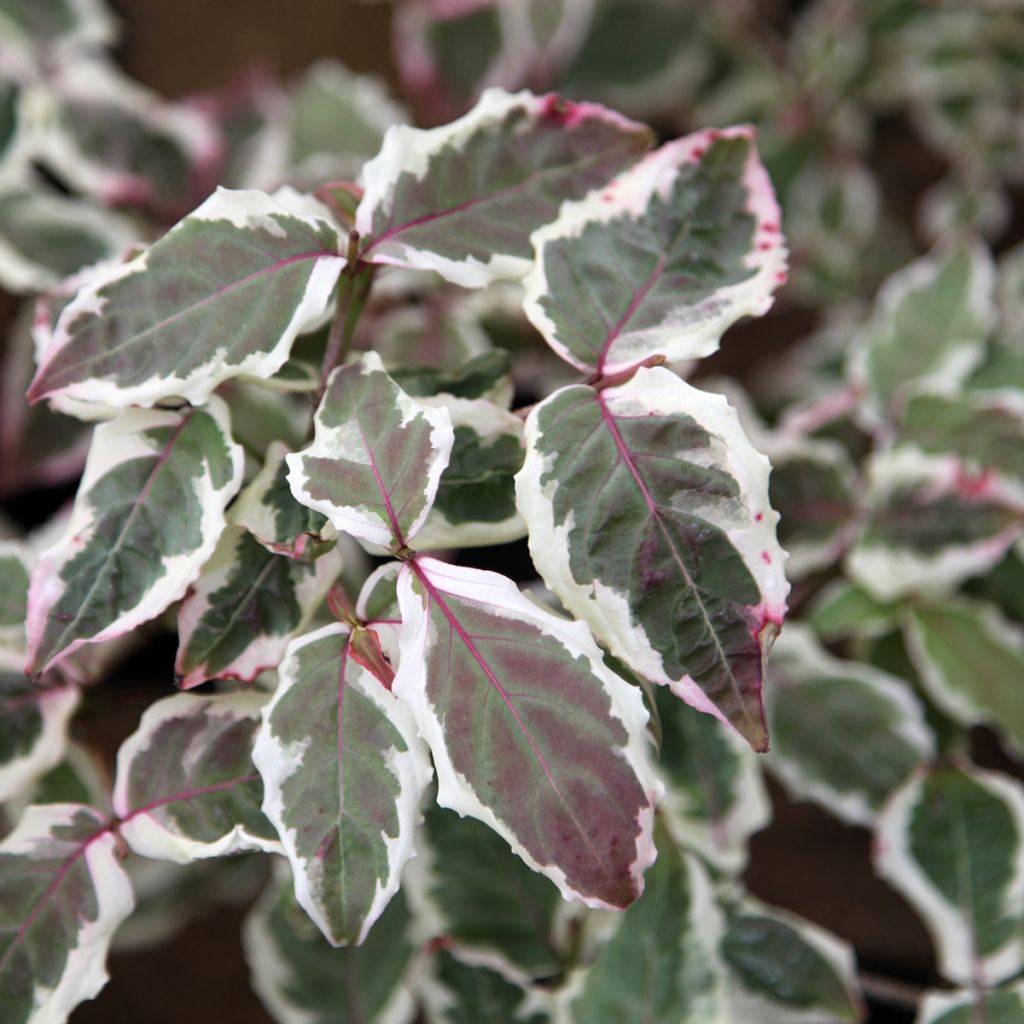

Cornus kousa Akatsuki - Cornouiller du Japon
Cornus kousa Akatsuki - Cornouiller du Japon
Cornus kousa Akatsuki
Cornouiller du Japon, Cornouiller à fleurs, Arbre à fraises
Craquez pour d'autres variétés similaires en stock
Voir tout →Garantie de reprise de 24 mois sur cette plante
Plus d'infos
Nous garantissons la qualité de nos plantes durant un cycle végétatif complet.
Nous remplaçons à nos frais toute plante n'ayant pas repris dans des conditions climatiques et de plantation normales.
A partir de 7,90 € pour une livraison en relais et 6,90 € pour une livraison à domicile
Livraison express à domicile en 24-48h: 8,90 €.
Cette plante est-elle adaptée à mon jardin ?
Je crée mon profil Plantfit →
Description
Le Cornus kousa Akatsuki est un Cornouiller à fleurs, dont le feuillage est aussi ornemental que la floraison. Pourpre à leur émergence, les feuilles sont ensuite vertes panachées de blanc crème durant la saison. En automne, elles finissent en apothéose dans des tons roses et pourpres. La floraison apparait en juin, sous la forme de bractées, d'abord blanches, puis virant progressivement au rose. Elles entourent un cœur constitué par les vraies fleurs, qui évolue ensuite en fruit rouge décoratif à la fin de l'été. Un arbuste extrêmement décoratif, aux couleurs attractives, du printemps jusqu’en automne. Spectacle garanti pendant les trois quarts de l’année !
Le Cornouiller fait partie de la famille assez confidentielle des Cornacées, qui, au terme de plusieurs remaniements de la classification botanique, ne compte plus que les genres Cornus et Alangium. Il existe plusieurs dizaines d'espèces de Cornouillers, la plupart étant des arbustes, mais on compte aussi dans la nature des petits arbres, comme le Cornus nuttallii, ou le Cornus kousa, qui pousse au Japon, en Chine et en Corée. On trouve également des sous-arbrisseaux, tels que le Cornus canadensis, qui forme un tapis couvre-sol.
'Akatsuki' est une variété du Cornouiller du Japon, obtenu par un sélectionneur japonais suite à une mutation du Cornus kousa 'Satomi'. Il s'en distingue essentiellement par son feuillage, qui présente une très belle panachure blanc crème. Occupant environ la moitié de la surface foliaire, parfois plus, cette marge claire entoure la partie centrale d'un vert assez foncé. Elle donne un aspect très lumineux au feuillage, qui sera particulièrement apprécié en situation mi-ombragée, créant ainsi un point attractif pour le regard. Les jeunes feuilles apparaissent d'abord pourpres avant de prendre leur parure panachée, tandis que des pigments rosés peuvent se développer en bordure durant la saison.
Comme souvent chez les plantes panachées, sa croissance est lente, du fait que les zones chlorophylliennes (la partie verte des feuilles) sont limitées. En 10 ans de culture, cet arbuste atteindra ainsi 2,50 m de hauteur et à maturité, approximativement 3 m, avec un port graphique, tabulaire, presque aussi large que haut, formant des étages de végétation.
En juin apparaissent les inflorescences, classiquement constituées par un glomérule central entouré de bractées colorées. Le glomérule est constitué de petites fleurs véritables serrées les unes contre les autres, d'une couleur jaune verdâtre. Les bractées sont des feuilles transformées, que l'on confond avec des fleurs, car ce sont elles qui sont ornementales. Chez Akatsuki, les bractées sont ovoïdes, avec l'extrémité pointue, disposées en croix d'une largeur totale de 8 cm. Leur originalité tient à leur couleur qui évolue avec le temps. Blanc crème à leur émergence, les bractées se chargent ensuite plus ou moins en pigments pour prendre progressivement une couleur rose d'intensité variable, avec des stades intermédiaires où les deux teintes cohabitent. Cette floraison rose, posée sur le feuillage vert et blanc, offre un spectacle superbe et qui dure plusieurs semaines. En août, les glomérules ont évolué en fruits rouges, qui ressemblent à des fraises, et que l'on peut manger, même s'ils ont plus d'intérêt décoratif que culinaire...
Le dernier temps fort de cet arbuste est à l'automne, quand le feuillage prend des colorations époustouflantes. La marge blanche vira alors au rose, tandis que le vert au centre passe au pourpre. Blanc, vert, rose et pourpre s'entremêlent quelque temps avant l'apothéose finale en couleurs chaudes, qui précèdent la chute des feuilles.
Arbuste de terrain neutre à acide, ce Cornouiller apprécie les sols humifères, frais à humides, tout en étant drainés. Résistant à des froids de -20°C, il préfère la mi-ombre qui lui garantira une meilleure humidité atmosphérique. Aussi, même si son grand intérêt ornemental justifierait pleinement une plantation en isolée, il vaut mieux l'intégrer dans un massif mi-ombragé, sous la lisière d'arbre et en compagnie d'autres végétaux. Pour élargir la période de floraison de votre scène, plantez l'Azalée de Chine Lingot d'Or, qui vous gratifiera de ses grandes fleurs jaunes en trompettes parfumées en avril-mai, tandis que son feuillage prend également de belles couleurs à l'automne. Pour l'été, choisissez une variété d'Hydrangea aspera, un Hortensia injustement peu planté alors qu'il est très ornemental avec son feuillage vert foncé velu et sa floraison bleutée à têtes plates. Attention toutefois, il n'aime pas la sécheresse, donc si votre climat est séchant en été, choisissez plutôt un Hydrangea quercifolia, l'Hortensia à feuilles de chêne qui résiste mieux et donc vous apprécierez les grands panicules de fleurs généralement blanc crème, ainsi que les grandes feuilles, qui prennent une coloration rouge pourpre à l'automne.
Cornus kousa Akatsuki - Cornouiller du Japon en images...


Port
Floraison
Feuillage
Botanique
Cornus
kousa
Akatsuki
Cormaceae
Cornouiller du Japon, Cornouiller à fleurs, Arbre à fraises
Horticole
Autres Cornus - Cornouillers
Plantations et soins
Ce Cornus kousa Akatsuki apprécie une terre riche en matières organiques, fraîche à humide, mais bien drainée, ainsi qu’un sol à tendance acide, voire neutre. Bien rustique et pouvant supporter des températures jusqu’à -20°C et même moins, un emplacement abrité des vents froids et desséchants de l’hiver sera néanmoins à privilégier. Les jeunes plantes peuvent notamment souffrir légèrement du gel. Il se plait au soleil du matin, comme à mi-ombre, avec une préférence pour cette dernière exposition, surtout dans les climats ensoleillés, où son feuillage panaché donnera le meilleur de lui-même. La plantation s’effectue au printemps, ou à l’automne. Tremper la motte dans un seau pendant un quart d'heure pour bien l'imbiber. Durant ce temps, creuser une fosse de plantation de 50 ou 60 cm de côtés et de profondeur et mélanger un sac de terreau de plantation à la terre en place. Mettre la motte en terre, reboucher autour et arroser abondamment. Faire des apports d'eau réguliers les deux premières années, puis pendant les périodes chaudes.
Quand planter ?
Pour quel endroit ?
Soins
Nos conseils plantation et soins
Le Cornus controversa 'Variegata'
notre spécialiste
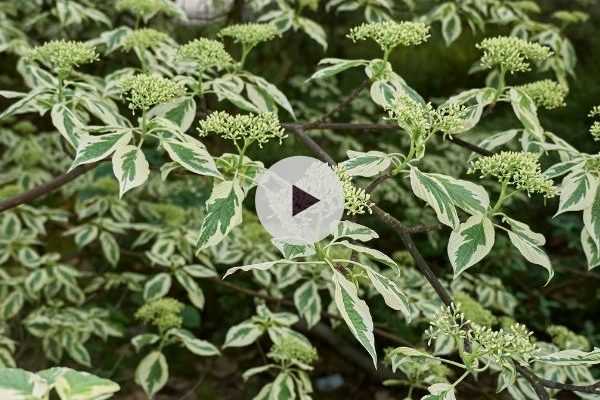
Cet article n'a pas encore reçu d'avis; soyez le premier à partager votre expérience.
Arbustes à feuillage remarquable
Vous n'avez pas trouvé votre bonheur ?
La rusticité est la température hivernale la plus basse qu'une plante puisse endurer sans subir de dommages sérieux, voire mourir. Cette rusticité est toutefois affectée par l'emplacement (zone abritée, comme un patio), les protections (voile d'hivernage) et le type de terre (la rusticité est améliorée par un sol bien drainé).

Conditions Générales d'Utilisation du Service Photos Client
Dans le but de favoriser l’interaction et le partage d'expériences entre jardiniers, Promesse de fleurs propose différents services permettant le dépôt de contenus sur son Site – via notamment le module « Partage de photos».
L’Utilisateur s’interdit de:
- Publier tout contenu illégal, préjudiciable, injurieux, raciste, incitant à la haine, révisionniste, contraire aux bonnes mœurs, portant atteinte à la vie privée ou portant atteinte aux droits privatifs de tiers, notamment le droit à l’image des personnes et des biens, le droit de propriété intellectuelle ou le droit au respect de la vie privée
- Déposer des contenus pour le compte d’un tiers
- Usurper l’identité d’un tiers et/ou publier toute information personnelle d’un tiers
D'une manière générale, l’Utilisateur s’engage à s’abstenir de tout comportement contraire à l’éthique
L’ensemble des Contenus (notamment textes, commentaires, fichiers, images, photos, vidéos, œuvres, etc… ), éventuellement soumis à des droits de propriété, propriété intellectuelle, droit à l’image ou autre droit privatif restent la propriété de l’Utilisateur, sous réserve des droits limités accordés par la licence définie ci-dessous à Promesse de fleurs. Les Utilisateurs sont libres de publier ou non de tels Contenus sur le Site via notamment le service « Partage de photos » et acceptent que ces Contenus deviennent publics et librement accessibles notamment sur Internet.
Ils reconnaissent, s’engagent et garantissent disposer de l’ensemble des droits et autorisations nécessaires pour une telle publication sur le Site, notamment au titre de la législation en vigueur et des droits au respect de la vie privée, de propriété, de la propriété intellectuelle, à l’image, des contrats ou de toute autre nature. Par une telle publication sur le Site, les Utilisateurs ont conscience d'engager leur responsabilité en tant qu'éditeur du Contenu au sens de la loi, et accordent sur le dit Contenu, pour toute la durée de publication, à Promesse de fleurs, une licence non exclusive, gratuite, mondiale, incluant les droits de reproduction, de représentation, de chargement, d’affichage, d’exécution, de transmission, de stockage.
Les Utilisateurs autorisent également que leur nom puisse être associé au Contenu et acceptent que cette association ne soit pas toujours faite.
Par leur publication, les Utilisateurs autorisent qu'un Contenu puisse devenir automatiquement accessible sur internet, notamment sur d'autres sites et/ou blogs et/ou pages web du site Promesse de fleurs incluant notamment les pages des réseaux sociaux et le catalogue de Promesse de fleurs.
Les utilisateurs peuvent librement obtenir le retait des contenus confiés, en contactant le service client via le formulaire de contact

































